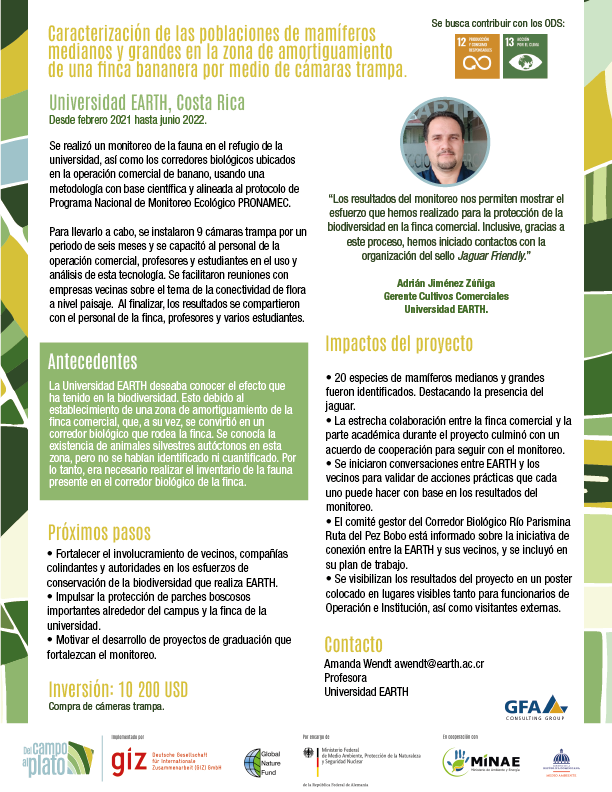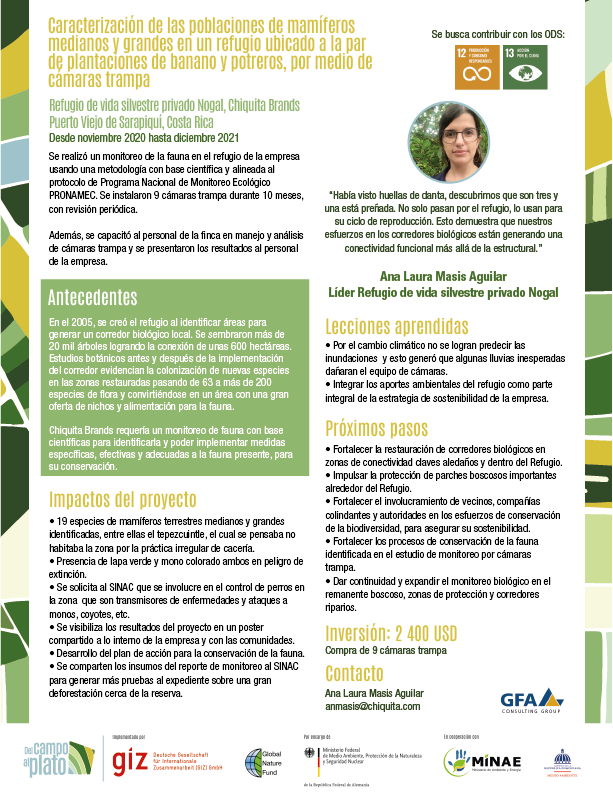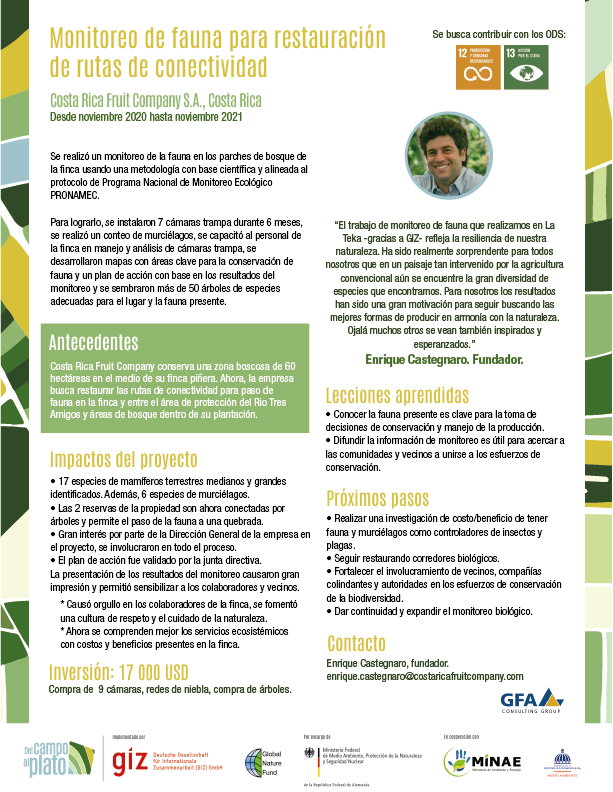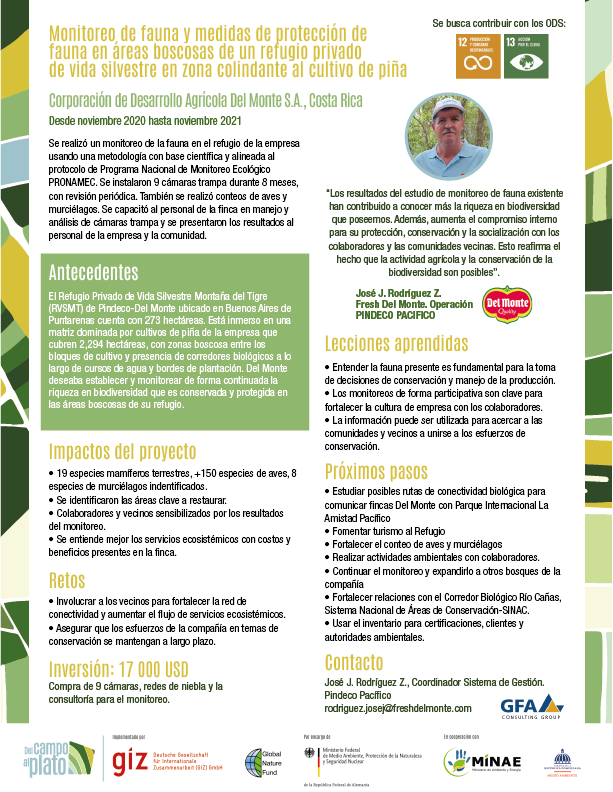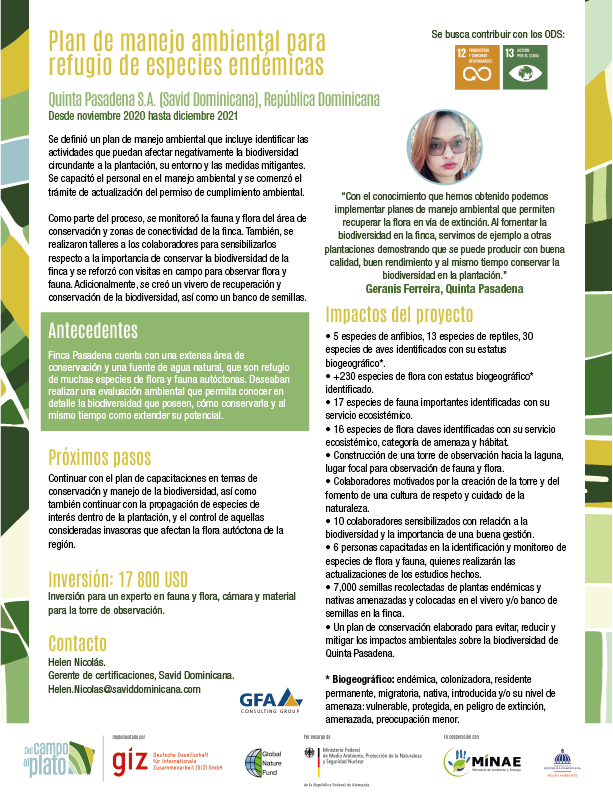Wildlife monitoring
Mammal populations in the buffer zone of a banana farm
Costa Rica
Between 2021 and 2022, EARTH University conducted a wildlife survey in the biological corridors located around their banana farm. Nine camera traps were installed for a period of six months. Staff, professors and students were trained in the use and analysis of this technology. They also established communication with neighboring companies.
Twenty species of medium and large mammals were identified, including the jaguar. Collaboration between the farm and the academic sector led to a cooperation agreement to continue with the monitoring. The plan is to promote the protection of forest patches around the campus and the farm and to strengthen the involvement of neighbors and other companies.
Mammal populations in a refuge located next to banana plantations
Costa Rica
Chiquita Brands conducted a wildlife survey at its private wildlife refuge Nogal, using 9 camera traps for 10 months. Staff was trained in camera trap handling and analysis and the results of the monitoring were presented to the company.
19 mammal species were identified, including rare or endangered species such as the lowland paca and Geoffroy’s spider monkey. Dog control was requested in the area to prevent the transmission of diseases and attacks on wildlife. An action plan for wildlife conservation was also developed.
Wildlife monitoring for connectivity restoration
Costa Rica
Between 2020 and 2021, Costa Rica Fruit Company conducted a wildlife survey in the forest patches of its pineapple farm using 7 camera traps for 6 months. In addition, bats were surveyed, personnel were trained, and maps were developed with key areas for wildlife conservation. Based on the results of the monitoring, an action plan was created and more than 50 trees were planted that were suitable for the local fauna.
17 species of terrestrial mammals and 6 species of bats were identified. The planted trees helped reconnect the forest patches and now allow wildlife passage to a stream. The project aroused great interest on the part of the company’s general management and the action plan was validated by the board of directors.
Wildlife monitoring and protection measures
Costa Rica
Corporación de Desarrollo Agrícola Del Monte installed 9 camera traps during 8 months to monitor the fauna present in the company’s wildlife refuge. Bird and bat counts were also carried out, farm personnel were trained in the use of camera traps, and the results of the survey were presented to the company and the community.
19 species of terrestrial mammals, 8 species of bats, and more than 150 species of birds were recorded. Key areas to be restored were identified and employees and neighbors were made aware of the monitoring results. This has contributed to a better understanding of the farm’s ecosystem services.
Environmental management plan for wildlife refuge
Dominican Republic
Between 2020 and 2021, Quinta Pasadena defined an environmental management plan to identify activities that could negatively affect the biodiversity surrounding the plantation. In order to develop mitigation measures, personnel were trained in environmental management and the fauna and flora around the farm were monitored. Awareness-raising activities were also carried out and a nursery and seed bank were created.
Numerous species of amphibians, reptiles, mammals, and birds were identified, as well as key plant species based on their ecosystem services and threat categories. A fauna and flora observation tower was built, which helps to promote respect and care for nature. Thanks to the project, many people have been trained and made aware of the importance of biodiversity on the farm.

